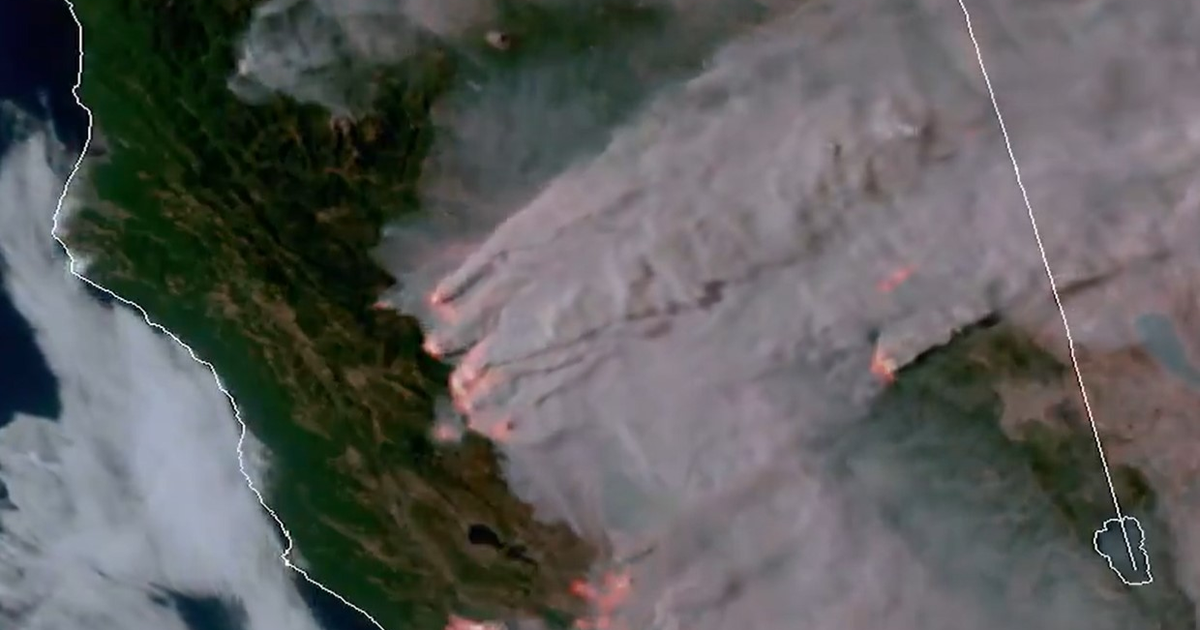
The second and third largest fires in California history are now burning at the same time. Along with over 500 other fires.
The Golden State — a region with long, dry, and sunny Mediterranean summers — naturally burns each year. But not like this.
The recent satellite and aerial imagery below show California blanketed in dense smoke as flames ignite mountain, chaparral, and desert regions. These landscapes exist within a changing fire regime, stoked by a relentlessly warming climate.
A changing climate is revealed in trends. Here’s one: The 10 biggest fires in California history have all burned in the last 17 years, since 2003. The three largest blazes have burned since 2018.
It’s easy to see why. Wildfires are the interaction of weather, climate, and fuels (like dried-out grasses and plants). “That’s just physics,” John Bailey, a fire ecologist at Oregon State University, told Mashable in 2019. But temperatures in California have been rising since the late 1800s. What’s more, heat waves are growing more intense in a warmer climate, and a heat wave of rare intensity has baked the West for weeks — perhaps setting the record for the highest temperature ever recorded on Earth. This dry, hot air parches vegetation, significantly boosting the odds for fires.
“During 1972–2018, California experienced a fivefold increase in annual burned area, mainly due to more than an eightfold increase in summer forest‐fire extent,” fire scientists concluded in research last year. “Increased summer forest‐fire area very likely occurred due to increased atmospheric aridity caused by warming.”
The climate dial, then, has been turned up for California and Western wildfires. All you need at that point is a spark. And in the last week, a lightning siege (of over 12,000 strikes) from a tropical storm system has lit up the land.
If you don’t believe in climate change, come to California.
This is from today. And is just a small part of the nearly 600 fires we are battling this week. pic.twitter.com/iv4stV3Aax
— Gavin Newsom (@GavinNewsom) August 23, 2020
California’s fires have emitted bounties of heat-trapping carbon, notably carbon dioxide, into the atmosphere. On Aug. 19, a surge in carbon emissions from California was the highest in the 18-year satellite record of reliable wildfire emissions monitoring. These fires, already amplified by a warming climate, also contribute to the warming climate.
This century, wildfires in the U.S. are on average burning twice as much land as they were in the 1990s. And in the West, modern blazes are burning for weeks, not days, longer.
